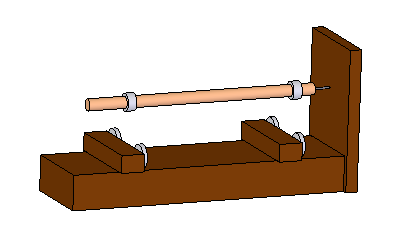Newman motor
Increasing the copper mass and magnet strength will increase the foot pounds of torque in the solenoid piston. An attraction oscillator the size of Joe Neman's "Big Eureka" would drive a train locamotive and run for free just like the big Newman motor. People routinely replicate the Newman spinner but they can't re-create the commutator, that's why we never see any self running Newman motors.
The solenoid magnet piston beats the switch spring to the top, and the inductive kickback is dissipated during this delay. Tapping back spike from the coil electrodes kills the induction; The current is traveling in the opposite direction!
Joe Newman's commutator had a section that sidetracked the back spike to a separate destination. The spring pressure switch simply looses it in a hysteresis loop so the output is unadulterated BEMF. Flyback kills induction.
Increasing the copper mass and magnet strength will increase the foot pounds of torque in the solenoid piston. An attraction oscillator the size of Joe Neman's "Big Eureka" would drive a train locamotive and run for free just like the big Newman motor. People routinely replicate the Newman spinner but they can't re-create the commutator, that's why we never see any self running Newman motors.
The solenoid magnet piston beats the switch spring to the top, and the inductive kickback is dissipated during this delay. Tapping back spike from the coil electrodes kills the induction; The current is traveling in the opposite direction!
Joe Newman's commutator had a section that sidetracked the back spike to a separate destination. The spring pressure switch simply looses it in a hysteresis loop so the output is unadulterated BEMF. Flyback kills induction.


Comment